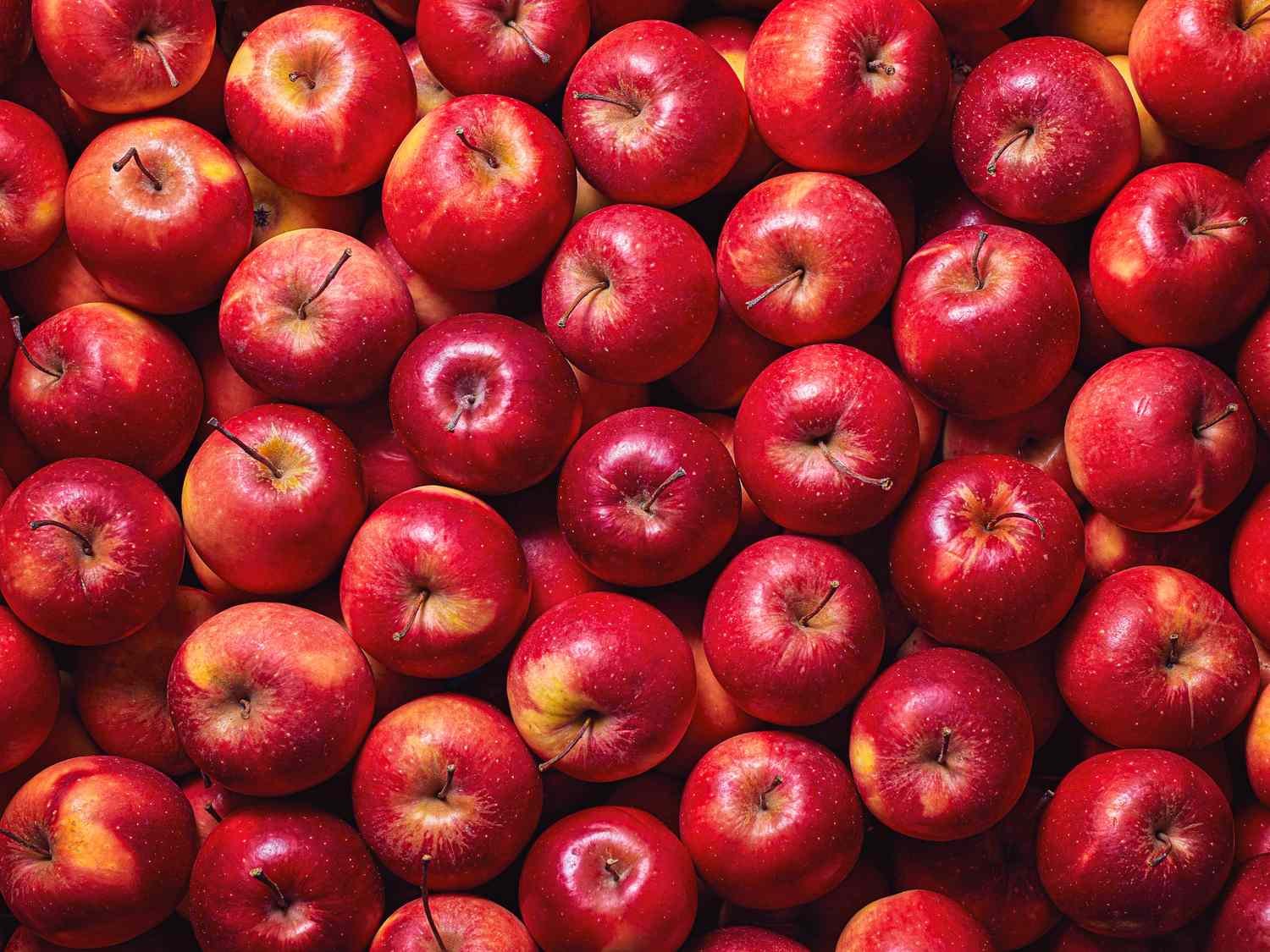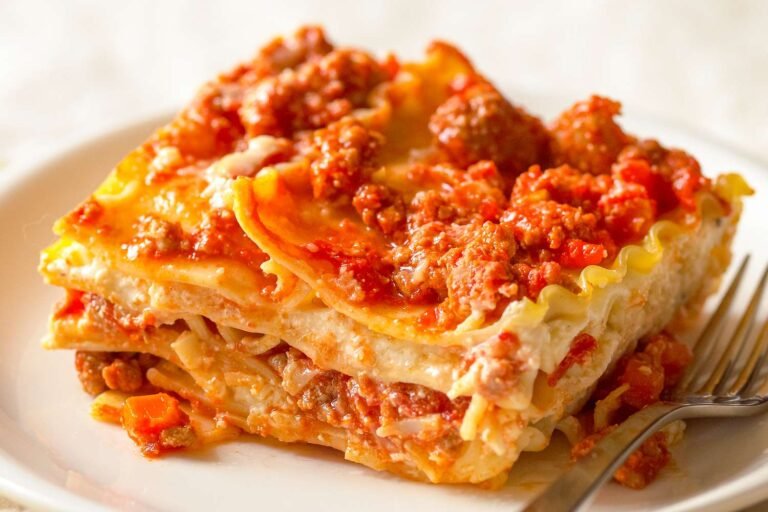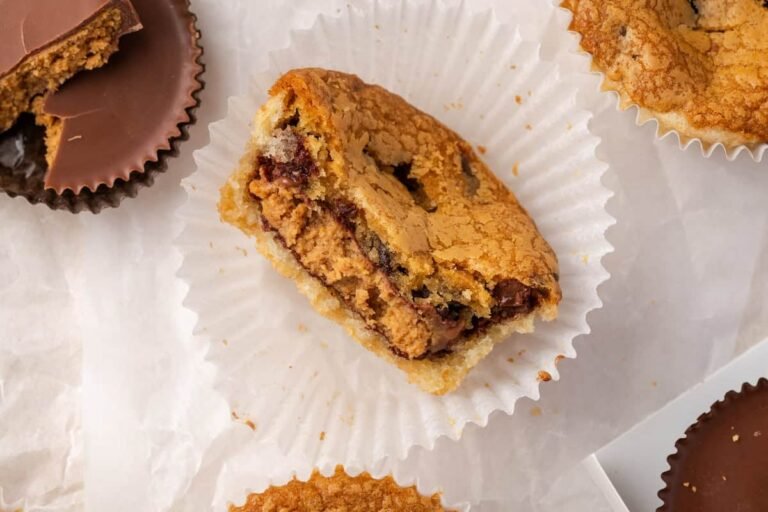As an Amazon Associate, I earn from qualifying purchases.
:max_bytes(150000):strip_icc():format(jpeg)/GettyImages-2167564751-Dharmendra-Yadav---500px-e4e67cb8e35f46ad92ffe87eb0628d04.jpg)
Apples last the longest when they’re kept commercially in what’s called a CA (controlled atmosphere) environment, where they can stay relatively fresh-tasting for up to a year. While they won’t last that long in your home fridge, you can keep your apples fresh and crisp for weeks at home by storing them in the refrigerator and maintaining the right level of humidity by putting them in a crisper drawer, perforated plastic bag, or an unsealed plastic bag.
I have nostalgic memories of going apple picking with my family every fall as a child in the Midwest. We’d all jump into the back of a pickup truck, where we’d sit on bales of hay as the truck drove us out to the apple orchard, my bowl-cut hair flapping in the wind. In retrospect, riding in the back of a truck on bound blocks of dried grass seems a bit unsafe—but it was the 80s, and we didn’t know any better. The Golden Delicious apples we picked, still warm from the sun, were truly the best apples I’d ever tasted: sweet and tart, with a crispness no grocery store apple could match.
As an adult, I’ve moved on from Golden Delicious apples (though there is an heirloom variety called Gilbert Golden Delicious that I’ve picked from an orchard in Sebastopol, California, that I adore). But I still crave apples, especially those with the perfect balance of sweet-tart flavor, crispness, and juiciness. With apple season upon us, the question presents itself: What is the best way to store apples so they stay fresh and delicious for as long as possible?
An Apple’s Journey From Tree to Store
Autumn is apple season, but apples are available year-round at most grocery stores. Once harvested, apples are often stored commercially in what’s called a controlled atmosphere (CA) environment: a cool space typically between 30 to 40°F (-1 to 4°C) with 85 to 95% relative humidity and reduced oxygen levels. This technology makes it possible for grocery stores to sell apples year-round, and any apple you purchase from a supermarket may very well have been stored for six months to a year before it even reaches the shelf.
The idea behind CA is to put apples “to sleep” by slowing their ripening. As they ripen, their cell walls soften, and the interior cells begin to dry out. Bite into an overripe apple, and the cell walls split rather than rupture, giving you a mealy bite. With a properly ripe apple, the cells shatter in your mouth, releasing juice and delivering the crispness everyone loves.
Regulating the storage atmosphere prevents apples from overripening and becoming mealy, but it’s a delicate balance, as each variety requires a different environment for optimal storage. Honeycrisp apples, for example, are susceptible to chilling injury (which can result in discoloration or soggy flesh) and are best stored at 37 to 38°F (2.7 to 3.3°C). Red Delicious apples, on the other hand, are best stored around 32°F (0°C).
Apple Basics
There are more than 7,500 known varieties of apples, but in the United States, only about 100 of them are grown commercially. Popular apple varieties in the United States include Gala, Granny Smith, Fuji, Golden Delicious, Honeycrisp, and Cripps Pink (often sold under the brand name Pink Lady). In the US, apples are typically harvested from August to November, though exact timing varies by variety and growing region. For instance, Honeycrisp and Gala are early-maturing apples, ready in August and September, while Fuji and Granny Smith are usually harvested in October.
Because apple varieties vary so much—and because it’s almost impossible to know how long an apple has already been stored—it’s difficult to predict how long any given apple will last in your kitchen. According to Jeff Colombini, chairman of the California Apple Commission and president of Lodi Farming, Inc., firmer, denser apples, such as Gala, Fuji, Granny Smith, and Cripps Pink, tend to have better storage life than softer varieties, like Red Delicious and Golden Delicious.
How to Shop for Apples So They Stay Fresh
Apples are a seasonal fruit. Although controlled atmosphere storage helps slow their ripening, apples continue to ripen after being picked. In general, if you are buying from the grocery store, you likely won’t know when your apples were harvested. However, if you are lucky enough to get local apples from a nearby orchard or farmers market, the vendor can likely tell you when the apples were picked, and you can choose those that were harvested most recently.
It’s best to select firm apples without any blemishes. “The old saying ‘one bad apple spoils the bunch’ really is true,” Wells says. Damaged or rotten fruit tends to release more ethylene gas, a naturally occurring gas and plant hormone that speeds ripening, resulting in fruit that ripens and spoils faster.
How to Store Apples, According to the Experts
Before I conducted my own tests on apple storage, I wanted to see what experts recommended. According to a response to an email I sent to Out on a Limb, a small homestead farm in central Maine that grows unusual, historic, and rare apples, the best way to store apples is in the refrigerator, not at room temperature. Colombini agrees, adding that it’s best to keep them in the coldest part of the fridge to slow ripening. “The ideal storage temperature is 34°F (1°C),” Colombini says. “Most refrigerators are set to 40°F (4.4°C), so this is not a practical solution. However, storing apples in the bottom drawer of a refrigerator is best because that is the coldest spot.”
If you’ve ever bought bagged apples from the grocery store, you’ll notice that the plastic is perforated, and the experts I consulted recommend keeping them in this bag to slow their ripening and keep them juicy. The plastic helps retain moisture, while the holes allow the apples to breathe. If your apples didn’t come in a perforated bag, many experts recommend storing them in a standard produce bag that’s left slightly open so air can circulate.
As for whether you should wash apples before storing them, Matt Wells, vice president of operations at Yes! Apples, says that it isn’t a good idea. Most apples actually have a layer of epicuticular wax, a natural coating that helps prevent moisture loss. “Washing right before you store them can actually shorten their shelf life,” Wells explains, “because it removes the apple’s natural protective layer and can introduce extra moisture that speeds up spoilage.”
The Tests
Armed with insight from the experts, I bought three common varieties—Granny Smith, Honeycrisp, and Cripps Pink—and tested how washing, refrigeration, and humidity affected their texture and flavor.
Serious Eats / Irvin Lin
Test One: Room Temperature and Washing
I took all three apple varieties and left them at room temperature (60 to 70°F/15.5 to 21°C), treating them in different ways:
- Apple unwashed
- Apple washed in 60°F (15.5°C) water
- Apple washed in 120°F (49°C) water
- Apple washed in a solution of 4 parts 60°F water to 1 part distilled white vinegar
- Apple washed in a solution of 4 parts 120°F (49°C) water and one part distilled white vinegar
- Apple unwashed and placed next to a banana
For my first test, I left one of each variety of apple, unwashed, on my kitchen counter. I then washed the remaining apples using the methods described above and stored them all at room temperature. I opted for water at two different temperatures; a solution of four parts water and one part distilled white vinegar at two different temperatures; and an unwashed apple placed next to a banana to see if additional ethylene gas would impact the apples.
When I conducted a similar series of tests to determine the best way to store cucumbers, I found that the natural wax on their skin helped prevent spoilage—and that washing them actually shortened their shelf life. Although every expert I spoke with advised against washing apples before storage, I wanted to see for myself how it would affect the fruit.
The experts were right: The unwashed apples fared best. After one week, the unwashed Granny Smith and Cripps Pink kept at room temperature held up fairly well. After three weeks, the washed apples performed the worst—the Granny Smiths had begun to yellow and soften, while the Cripps Pink showed slight browning. I suspect the hot water and vinegar removed more of the apple’s natural epicuticular wax, leaving them more vulnerable to moisture loss and spoilage.
The washed Honeycrisp apples showed the most dramatic change. Known for their crisp texture and juiciness, Honeycrisps are more fragile than other varieties due to their larger, juice-filled cells and thin skin. That thin skin also makes them prone to moisture loss. All of the Honeycrisps I tested began to shrivel after just one week, and by the third week, the apple washed with hot water and vinegar had already begun to mold.
Test Two: Refrigeration and Humidity
After determining that unwashed apples held up best, I tested whether refrigeration and humidity made a difference. These are the tests I ran:
- Apple by itself, on middle refrigerator shelf
- Apple in a perforated plastic bag folded over, on middle refrigerator shelf
- Apple in a sealed zip-top bag, on middle refrigerator shelf
- Apple wrapped in a clean, dry paper towel in a sealed zip-top bag, on middle refrigerator shelf
- Apple by itself, in a crisper drawer
For my second test, I left one of each type of apple on a shelf in my refrigerator with no other items aside from the apples on the shelf. I then stored the remaining apples using the methods described above and stored them in my fridge: All of the apples were kept on the refrigerator shelf, with the exception of the apple kept in the crisper drawer. In every case, the refrigerated apples looked and tasted fresher than those kept at room temperature.
As in the first test above, Honeycrisp apples proved to be the most fragile. The Granny Smith and Cripps Pink apples looked nearly identical after three weeks in the refrigerator, regardless of where they were placed. The Honeycrisps stored in a perforated plastic bag, wrapped in a paper towel and sealed in a zip-top bag, and kept in the crisper drawer all appeared relatively fresh after three weeks. But the one left unwrapped on a shelf began to wrinkle and lose its color.
The Honeycrisp stored in a fully sealed zip-top bag fared worst, developing a dark bruise about the size of a pinto bean. It’s possible the apple had a small, barely visible bruise when stored, and the sealed bag trapped ethylene gas, accelerating ripening and spoilage. This test showed that apples kept in a controlled-humidity environment—such as a crisper drawer, a perforated plastic bag, or a partially open bag—lasted longer.
Serious Eats / Irvin Lin
Key Takeaways and Conclusion
The results made one thing clear: You shouldn’t wash apples before storing them. As Wells noted above, washing apples before storing removes the fruit’s protective layer, shortening their shelf life. Refrigerating apples in a perforated produce bag or a partially open plastic bag, then placing them in a humid area such as the crisper drawer, will likely yield the longest-lasting results—even for more fragile varieties such as Honeycrisp.
If you plan to eat your apples within five to seven days of purchasing them, you can store them on the counter, but all varieties will last longer in the fridge. The best way to store apples is in a perforated produce bag, preferably in your refrigerator’s crisper drawer. If you don’t have a perforated produce bag, a regular produce bag will work—just leave it slightly open to allow the fruit to breathe. Denser varieties, such as Fuji, Granny Smith, and Cripps Pink, will last longer than more delicate types like Honeycrisp.
Quick Tips for Apple Shopping and Storage
- For maximum flavor, try to purchase apples from your farmers market during the fall, which is when most apples are harvested.
- Buy firm apples that are free of blemishes and bruises.
- Avoid stacking apples, as the fruit on top may damage the fruit on the bottom.
- If you store apples at room temperature, eat them within five to seven days.
https://www.seriouseats.com/how-to-store-apples-11822852
https://www.seriouseats.com/thmb/3HloiGf85KbSGTntLvGTL7WNXqc=/1500×0/filters:no_upscale():max_bytes(150000):strip_icc()/GettyImages-2167564751-Dharmendra-Yadav—500px-e4e67cb8e35f46ad92ffe87eb0628d04.jpg
The Latest,Features,Cookware,Equipment,How-Tos,Fruit Guides,Fruit Recipes,Recipes By Ingredient,Recipes,Ingredient Guides
#Single #Bad #Apple #Ruin #Bag #Heres #Science
Check out this PAGE – https://www.seriouseats.com/how-to-store-apples-11822852
Check out this Page Travel Package discount Must haves – Source2
Disclaimer: As an Amazon Associate, I earn from qualifying purchases; I may earn a commission from qualifying purchases as an affiliate. Please note that I only recommend products I believe will provide value to my readers.




